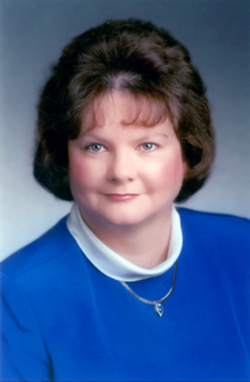
From left, Mary Helen Collins and Jennifer Beckman, both nurses in the NICU, wave flags during a recent luncheon to honor the NICU staff at the Monroe Carell Jr. Children's Hospital at Vanderbilt.
photo by Dana Johnson
Staff finds creative ways to ride VCH growth wave
Managers are working a little magic over at the Monroe Carell Jr. Children's Hospital at Vanderbilt as the hospital is dealing with faster-than-expected-growth. The staff has experienced the hospital's growing pains with the “double whammy” of adjusting to the surroundings in the new building as well as a staff level that is growing more slowly than demand.
“We have been operating over budgeted volume,” said Pat Chenger, administrative director of Nursing and Clinical Services. “The majority of the vacancies have been created because of the volume of patients. The recruitment people have worked very hard to be creative and get the resources to address our staffing needs.”
But recruitment, while going well, takes time. In the meantime, Chenger said staff in all areas are working especially hard.
“We've just opened 10 observation beds on the first floor and eight additional acute care beds on the fifth floor. At the beginning of 2005 we have plans to open an additional pod when staffing allows,” Chenger said.
To keep morale up while growth continues, managers of the different patient care areas have taken matters into their own hands and are finding creative ways to keep morale high.
“They are doing what makes sense for their staff, for their area, depending on the unit culture,” Chenger said.
In the neonatal intensive care unit (NICU), for example, where the average tenure of nursing staff is 15 years, nurse manager Marlee Crankshaw is trying to find new ways for staff to bond.
“We've been geographically separated. We don't see each other like we used to,” Crankshaw said about the new facility, which is designed with private rooms for all patients rather than the large open unit of the past. “The lounge is set away from the patient areas so everyone tries to be very careful with their lunch and break times. Many times if you work in the same pod together you can't leave for lunch together, so we're trying to figure out if there's something we can do to bring (camaraderie) back.”
Crankshaw and her leadership team have begun trying out different events where staff can gather for a meal, or to share time together. In August the leadership team rented a popcorn machine and kept the bags of popcorn flowing.
In October everyone got Halloween pins, made by their management team. On Election Day they had an all-American hot dog and apple pie lunch. A favorite event was a pancake breakfast.
“Some of the main cooks were chief of nurseries Dr. Bill Walsh, our new division chief, Dr. Judy Aschner, and Pat Chenger,” said Crankshaw. “We had everyone cooking. We served the staff as they walked in the door before their shift began and night staff as they left for the day.”
But while camaraderie and bonding are an issue for the NICU, the Emergency department had a morale damper that was tougher to pinpoint. Nurse Manager Sue Hix Cadwell thought it was patient flow and worked in early months to fix that problem, but she says she found that really didn't address the issue.
“I called Brent Lemonds in the adult E.D. back in February,” recalled Cadwell. “He met my staff and helped us look at core issues. It turns out trust between staff and management was a real issue. We said trust was the basis on which we could build everything else to begin to fix the problems, so it became our core issue.”
Management teams across Children's Hospital and throughout VUMC are taking a long and careful look at how to improve the work environment for staff.
While the main drive for now is helping to improve long term morale to retain a workforce in the face of a nationwide shortage, the ultimate goal is to become the kind of place people love to work, and plan to stay for a long time.
“We want the staff to know there's a light at the end of the tunnel, and it's no longer a train,” said Chenger. “Some of the new staff have already started and by the first of the year we will have added 40 more.”













